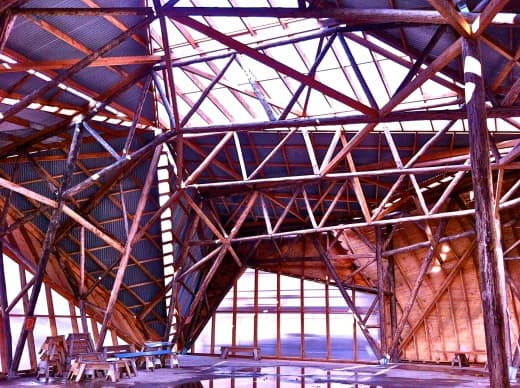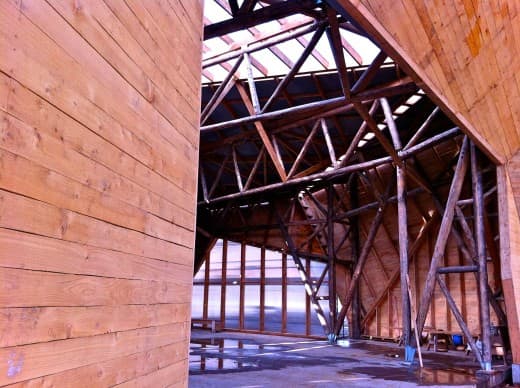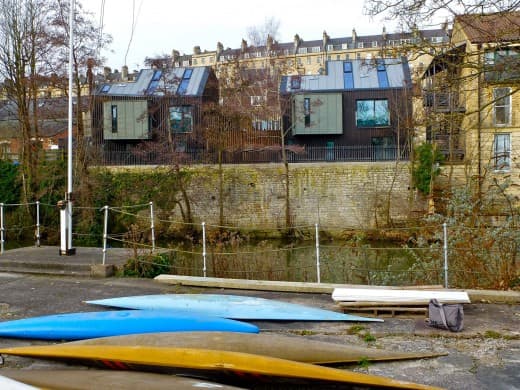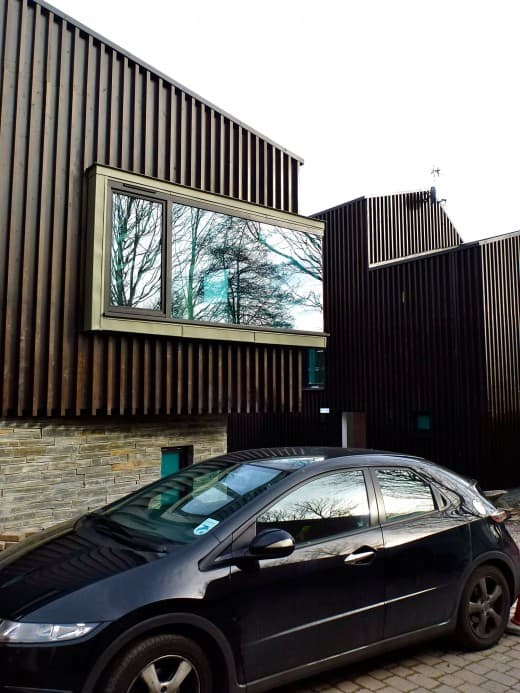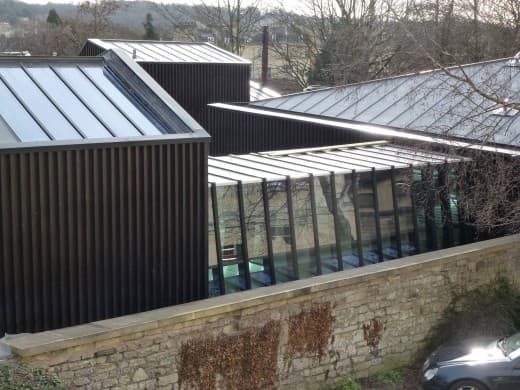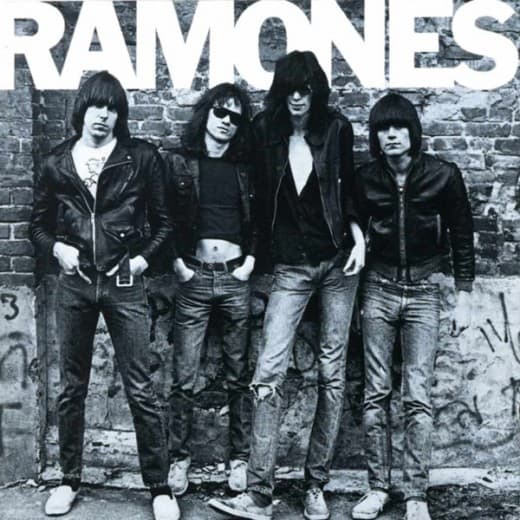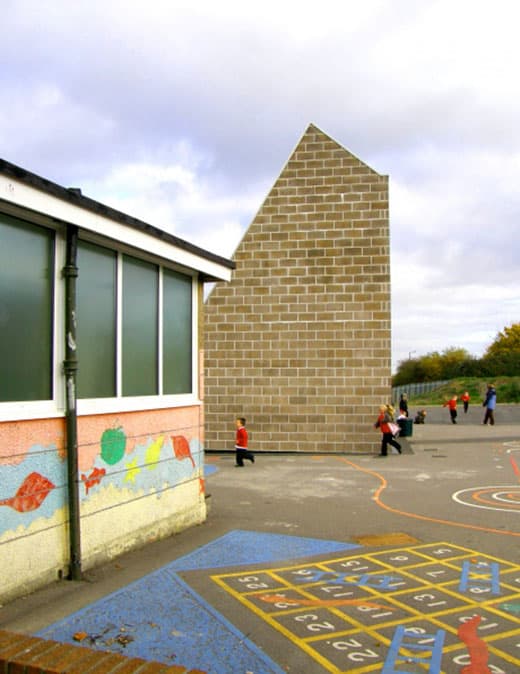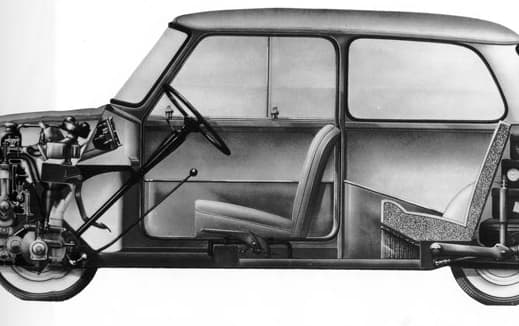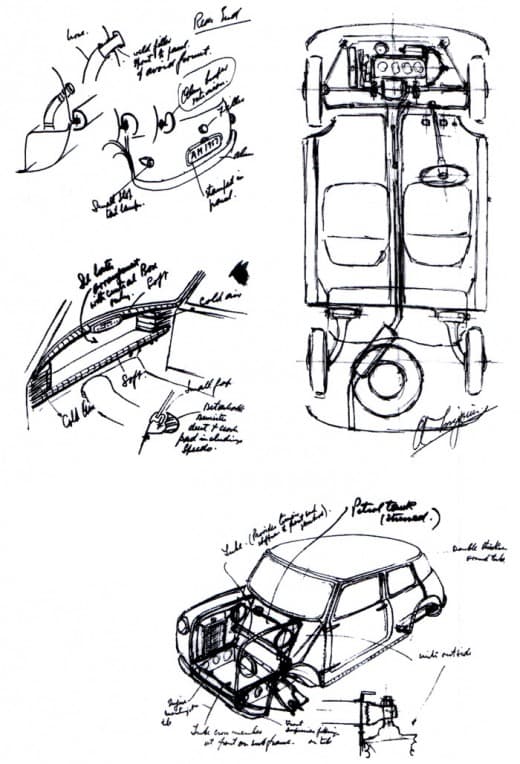The final stretch now – only the internal gutters to do, which have been sourced. The Design and Make students will be using the building after Easter to fabricate this year’s project – a student house.
Stillpoint
It’s 7 months late… and so nearly finished. Went to site this morning to try and get a few images of Riverpoint, and will get it properly photographed in the spring
Ramones
It’s impossible to think of the Ramones without thinking of their first album artwork in 1973 – a photograph taken by Roberta Bayley of the four ‘brothers’ dressed in identical uniforms, skinny ripped jeans, cheap plimsolls and leather jackets leaning nonchalantly against a distressed wall with the band name looming large above them. There’s such a great deal architects can learn from pop music, and in particular the Ramones, who showed us that it’s about everything as well as the music – it’s about the invention of an identity that gets lived and breathed.
The Ramones understood the potential of the graphic image. You’d have bought the record on the strength of the album artwork and its promise of irreverent polemic without even hearing the first perfect minute and a half of existential angst that opens side one. It’s astonishing just how much one photograph can say about a band.
So many of us still see the building as a divine and pure object of desire, capable of telling its own story. But architects don’t just make buildings; we also create an image, an image that places us in the cultural context in which we operate.
I can’t help but wonder whether architects should be more like the Ramones, who couldn’t really play and could hardly sing, but knew that the music was only part of the story. If only more architects understood that design is an attitude as much as a thing, an identity that we can try on, change, adapt, use to provoke and communicate with, a loaded and charged social and political tool and that it isn’t just about the building.
Room 13
I went back to Hartcliffe recently to take some more photographs of Room 13 five years or so after we did it. I’m sad we never had it professionally photographed, but at the time it seemed a huge expense/indulgence and I guess somehow counter to the home made trash aesthetic of the project – to fetishize it in a series of slick and expensive photographs. But of course, with the right photographer it wouldn’t be like that – If you are a photographer and can give me a good price to document the project and context now, please get in touch.
Alec Issigonis
Alec Issigonis designed the first Mini in about 1957 on the back of a napkin. It was such a revolutionary idea, yet so simple and so beautiful. It was easy to communicate with a few pen sketches the intelligence of the thing – a tardis like box that was bigger on the inside than on the outside, where every square inch of space was maximised so that four people could sit in comfort and still have acres of storage space around them.
Issigonis achieved it by mounting the engine, gearbox and radiator sideways, by eliminating anything that wasn’t essential and by getting his old friend Alex Moulton to design tiny rubber suspension pieces instead of springs to stop suspension turrets from jutting into the passenger cell.
It was also, in the early days, just so beautiful – the two spoke Bakelite wheel, the wand like gear stick, those lovely door pulls which where just a piece of plastic coated wire, the sliding windows, those little toggles that were the locks, and the numberplate that flipped down when you opened the boot.
It seemed so obvious to me that architects had such a great deal to learn from his attitude to packaging space, yet remember being told by an old tutor of mine when I was at the AA when I asked her why we thought about space in such a different way to Issigonis: ‘God, you’re so stupid Piers, I cant even believe you’ve asked that question’. But I never understood, because she never told me, why architects couldn’t learn from Issigonis.
Categories
- 100k house
- Articles
- brexit
- Caretaker's House
- Christchurch
- current
- East Quay Watchet
- film
- ghost barn
- Glenn Murcutt
- Heroes
- Hooke Park
- House in an Olive Grove
- Invisible Studio
- longdrop
- Mess Building
- Moonshine
- On the Road Again
- passihvaus
- piers taylor
- piers,taylor
- press
- Projects
- Riverpoint
- Self Build
- Stillpoint
- Studio Build
- Studio in the Woods
- talks
- Trailer
- truss barn
- Uncategorized
- Vernacular Buildings
- watchet
- Westonbirt
Tags
- caretaker's house
- design and make
- Design Build Workshop
- Design Make
- east quay
- east quay watchet
- Glenn Murcutt
- green timber architecture
- Hooke Park
- Hooke Park Big Shed
- Invisible Studio
- Low Impact House
- moonshine
- Onion Collective
- piers taylor
- Piers Taylor Architect
- piers taylor invisible studio
- self build
- self build architect
- Starfall Farm
- Stillpoint Bath
- studio in the woods
- Sustainable Architecture
- The house that £100k built
- timber architecture
- Timber House
- timber workshop
- visible studio
- westonbirt architecture
- westonbirt tree management centre
